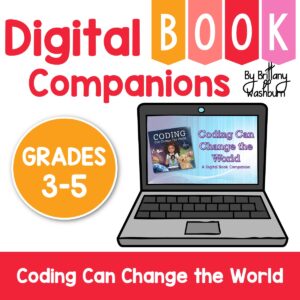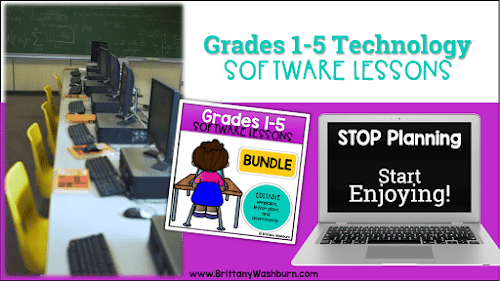Tech Teacher Guide to Introducing Computer Science

As technology continues to shape and transform our world, computer science education has become increasingly important. Elementary schools, in particular, have recognized the need to introduce computer science concepts to students at a young age to prepare them for the future. However, teaching computer science to young learners can be challenging, especially for educators who have limited experience in the field. This guide aims to provide elementary technology teachers with helpful strategies and resources for introducing and teaching computer science concepts effectively. From understanding the basics of computer science to promoting computational thinking, this guide covers various aspects of computer science education for elementary students.
Understanding the Basics of Computer Science
What is Computer Science?
Computer Science involves understanding how computers work and how to use them to solve complex problems. It is a rapidly growing field that is transforming the way we live, work, and communicate. Although it may seem daunting, teaching computer science concepts to elementary students can be a fun and engaging way for them to learn important skills such as problem-solving, critical thinking, and creative expression.
Why is it Important for Elementary Students?
In today’s technology-driven world, having a basic understanding of computer science is essential for success. By introducing computer science concepts to elementary students, we are helping them develop important skills that will be useful in their future careers. Moreover, learning computer science can help students become better problem-solvers and analytical thinkers, which can have a positive impact on their academic performance across all subjects.
Effective Strategies for Introducing Computer Science Concepts
Engaging Students in Computer Science Learning
One of the most effective ways to teach computer science concepts to elementary students is to engage them in hands-on activities that make learning fun and exciting. For example, using games and puzzles to teach programming concepts can be a great way to get students interested in the subject matter.
Using Real-life Examples and Applications
Another effective strategy for teaching computer science is to use real-life examples and applications. By showing students how computer science is used in the real world, such as in healthcare, entertainment, or even everyday tasks like grocery shopping, students can better understand the importance of computer science and be motivated to learn more.
Creating Collaborative Learning Opportunities
Collaboration is a critical component of learning computer science concepts. By working in groups, students can learn from each other, share their ideas, and collaborate on projects. Additionally, group work can help students feel more comfortable and confident in their abilities, which can lead to greater success in their computer science coursework.
Choosing the Right Tools and Resources
Evaluating Computer Science Tools and Software
When introducing computer science concepts to elementary students, it is important to choose the right tools and software. There are many different programs and resources available, so it is important to evaluate them carefully to find the ones that are the most appropriate for your students.
Finding Appropriate Resources and Materials for Elementary Students
It is also important to choose resources and materials that are appropriate for elementary students. For example, there are many coding websites that are specifically designed for young learners, and books and games that are geared towards teaching basic programming concepts in a fun and engaging way.
Structuring Computer Science Lessons for Elementary Students
Breaking Down Complex Concepts into Digestible Chunks
When teaching computer science concepts to elementary students, it is important to break down complex ideas into smaller, more manageable chunks. This can help students better understand the material and prevent them from feeling overwhelmed.
Teaching Programming Languages for Young Learners
It is also important to choose programming languages that are appropriate for young learners. For example, Scratch is designed specifically for young children and involves dragging and dropping various code blocks to create animations and games.
Assessing Student Progress and Understanding
Finally, it is important to assess student progress and understanding throughout the course. This can be done through quizzes, projects, and other assignments that allow students to demonstrate their skills and knowledge. By assessing student progress and understanding, teachers can identify areas where students may need more support and provide additional resources or instruction as needed.

Teaching Coding and Programming Concepts to Young Learners
As an elementary technology teacher, introducing and teaching computer science concepts to young learners might seem like a daunting task. However, it can be made easier by using games and interactive activities to introduce coding concepts. These activities make learning fun and engaging, while also promoting the development of critical thinking skills. Once students are familiar with the basic concepts, teaching programming languages becomes easier. It’s important to keep in mind that students at this level may not have the capacity to learn complex programming languages, so it’s recommended to start with the simpler ones.
Introducing Coding Concepts through Games and Interactive Activities
One great way of introducing coding concepts is through games and interactive activities. These activities can be done online or in the classroom. For instance, you can create a maze using colored blocks and have your students navigate it using basic commands. You can also try creating simple animations or games based on existing ones. These activities help students to understand basic programming concepts such as sequences, loops, and conditionals.
Teaching Basic Programming Concepts and Languages
Once students are familiar with the basic coding concepts, it’s time to teach them some programming languages. You can start with simpler ones such as Scratch or Tynker, which is designed specifically for young learners. Using games or animations, students can learn how to code and create a variety of interactive projects. Python is another popular language for young learners, but it requires slightly more advanced skills.
Challenges and Projects to Develop Skills and Creativity
Challenges and projects are great ways to encourage students to develop their skills and creativity. Assigning projects such as creating an animated story or designing a simple game can help students to develop problem-solving skills and to apply the concepts they have learned.
Promoting Computational Thinking and Problem-Solving Skills
Computational thinking is an essential skill for students to develop, as it helps them to think logically and systematically. You can promote computational thinking by developing logical thinking and reasoning skills, teaching problem-solving techniques, and encouraging students to apply computational thinking in other subjects.
Developing Logical Thinking and Reasoning Skills
To develop logical thinking and reasoning skills, you can engage students in activities such as puzzles, logic games, and brain teasers. These activities help students to think critically and to solve problems through the use of logic and reasoning.
Teaching Problem Solving Techniques through Computer Science
Problem-solving techniques are a crucial aspect of computer science. You can teach students these techniques by providing them with coding challenges and asking them to work in groups to find solutions. Encourage them to approach problem-solving in a systematic way, breaking down the problem into smaller parts and testing possible solutions.
Encouraging Students to Apply Computational Thinking in Other Subjects
Computational thinking can be applied in other subjects such as math, science, and even social studies. Encourage your students to apply the concepts they learn in computer science to other subjects. For example, they can use coding to create simulations in science class or to graph data in math class.
Assessing Student Learning and Progress
Assessing student learning and progress is an important part of teaching computer science. Effective assessment strategies, providing feedback, and adjusting teaching approaches based on student progress can help students to develop the skills they need.
Developing Effective Assessment Strategies for Computer Science Learning
Effective assessment strategies for computer science learning can include quizzes, projects, and coding challenges. These strategies test students’ understanding of the concepts they have learned as well as assess their ability to apply them.
Providing Feedback and Encouragement to Students
Providing feedback and encouragement to students is crucial for their development. Feedback can be given through comments on projects, in-person discussions, or written evaluations. Encouragement can come through positive reinforcement, such as words of praise or recognition for a job well done.
Adjusting Teaching Approaches Based on Student Progress
It’s important to adjust teaching approaches based on student progress. For instance, if a student is struggling with a particular concept, you can provide additional support or resources to help them better understand it.
Collaborating with Other Teachers to Enhance Computer Science Education
Collaborating with other teachers can enhance computer science education. Working with math and science teachers to integrate computer science concepts, collaborating with technology specialists to enhance learning opportunities, and networking with other elementary teachers to share best practices and ideas can help you improve your teaching skills and provide better learning opportunities for your students.
Working with Math and Science Teachers to Integrate Computer Science Concepts
When math and science teachers integrate computer science concepts it provides opportunities for cross-curricular learning. For example, students can use coding to analyze data in science or to explore geometric shapes in math. This collaboration can also help bridge the gap between traditional subjects and technology.
Collaborating with Technology Specialists to Enhance Learning Opportunities
Collaborating with technology specialists can provide opportunities for more advanced learning. Technology specialists can help to develop more complex projects and to teach students more advanced programming languages.
Networking with Other Elementary Teachers to Share Best Practices and Ideas
Networking with other elementary teachers can provide opportunities for collaboration and sharing of best practices and ideas. It can also help to build a community of teachers who are passionate about teaching computer science and who are committed to improving their skills. Introducing computer science to elementary students is an exciting opportunity to prepare them for the future and help them develop essential skills.
By following the strategies and tips in this guide, elementary technology teachers can create engaging and effective computer science lessons that inspire young learners to explore and apply new concepts. With the right tools, resources, and teaching approaches, the possibilities for computer science education in elementary schools are endless.
Frequently Asked Questions
What is the importance of teaching computer science to elementary students?
Teaching computer science to elementary students is crucial because it helps them develop essential skills such as logical thinking, problem-solving, and creativity. Additionally, computer science education can prepare students for future careers in technology-related fields and help them become responsible and informed digital citizens.
Do I need to have a background in computer science to teach it to elementary students?
No, you do not need a background in computer science to teach it to elementary students. It is helpful to have some basic knowledge of computer science concepts and programming languages. However, if necessary, don’t be afraid to learn alongside your students and use online resources and tools to enhance your teaching. Check out our tips in Teach Coding Concepts Even if You Don’t Know How to Code.
What are some effective teaching strategies for computer science education in elementary schools?
Effective teaching strategies for computer science education in elementary schools include introducing concepts through interactive and gamified activities, creating collaborative learning opportunities, and breaking down complex concepts into digestible chunks. You can also use real-life examples and applications of computer science concepts to make them more engaging and relatable to young learners.
How can I assess student learning and progress in computer science education?
Assessing student learning and progress in computer science education can be challenging, but there are several effective strategies you can use. These include developing rubrics and checklists for projects and assignments, providing feedback and encouragement to students, and adjusting teaching approaches based on student progress. You can also involve students in self-assessment and peer assessment activities to promote learning and critical thinking.



















